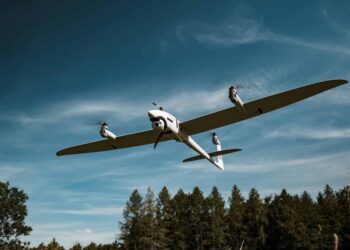Eurocopter, MARIGNANE, France: This year, at the end of August, the new European Aviation Safety Agency (EASA) awarded the EC 225 helicopter an airworthiness certificate for unrestricted operations in icing conditions.
The EC225 thus became the first helicopter in its category to be certified to the most recent and stringent icing regulations.
To be able to fly in such conditions, the helicopter is fitted with a duplex-architecture protection system that satisfies the highest level of safety requirements ever demonstrated.
The 5 main rotor blades are deiced cyclically by mats heated by metal resistors. With this system, the blades can be folded manually.
The anti-icing system for the 4 tail rotor blades operates continuously. The blades incorporate 4 anti-icing carbon resistors.
The master box of the ice protection system energizes the heating mats in the main and tail rotor blades. Power is transferred from the stationary to rotating parts of the rotors through slip rings, derived from those on the NH 90, i.e. a ring and brush technology. The slip rings meet the system's electrical (high power), reliability and service life requirements.
The development and certification phases were completed in three flight test campaigns of about 100 flight hours, in which the helicopter performed outstandingly in all the required icing conditions.
At the handover of the official documents, the Super Puma/EC 225 Program Director, Bernard Fujarski, said: “Thanks to the new certification, the EC 225 is the only helicopter in its category to integrate a system authorizing limitation-free flying in icing conditions. This certification will substantially expand the helicopter's operating envelop by paving the way to an all weather capability. It will also help to improve the overall top-level safety concept integrated on the helicopters in this family, of which the EC 725 – the military version of the helicopter – is also a member.”
This certification follows the certification of the AS 332 L Super Puma in June 1983, which at the time made it the very first helicopter in the Western world to have this operational capability.
The EC 225, which is the most advanced version in this twin-engine, medium-weight helicopter family, has a basic takeoff weight of 11,000 kg or 11,200 kg with a sling load.
The helicopter is designed for passenger transport, especially in the offshore and VIP sectors, and for search and rescue operations in the public sector.
The EC 225 features a new 5-bladed, Spheriflex-design main rotor, a reinforced main gearbox, new engines and a novel advanced helicopter cockpit and display system.
These new proven technologies enhance performances (speed, maneuverability), comfort (vibration, noise) and flight safety
Germany says adding explosive drones to weapons arsenal
Germany said Friday it would buy explosive drones for the first time as Berlin boosts investments in its armed forces...









